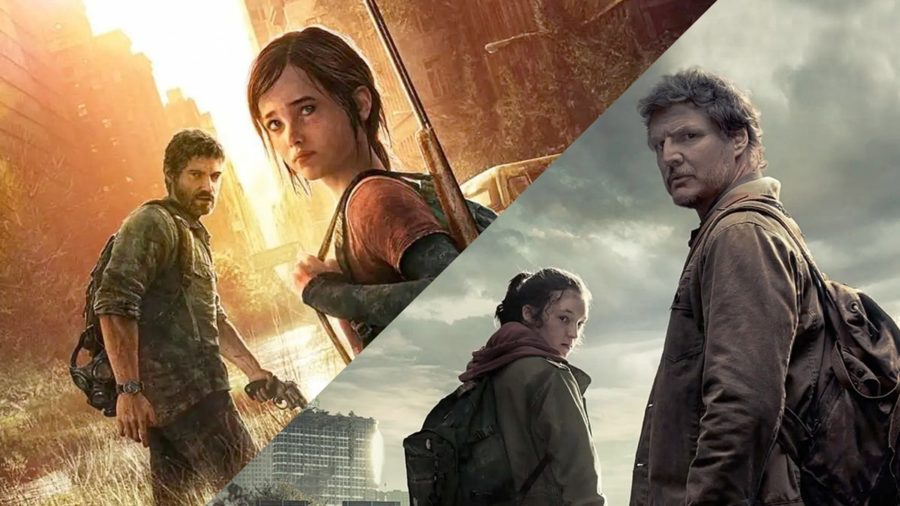The Last of Us Game vs. HBO Series: Facts & Opinions
Side-by-side comparison of the game and tv show. Via HBO and NaughtyDog.
HBO’s latest hit, The Last of Us, has recently joined the network’s list of series with over 15 million viewers, joining the good company of hit series such as White Lotus, House of Dragon, and Euphoria. To celebrate this achievement, I’ve decided to review the now fully-aired first season, with reference to its video-game inspiration.
The Last of Us TV series premiered on January 15th, 2023, and stars Pedro Pascal and Bella Ramsey as lead characters Joel Miller and Ellie Williams. Each episode measures just over an hour long, with an episode premiering every Sunday over its 9-week/episode runtime through March 12th.
For those unfamiliar with NaughtyDog’s original PS exclusive game that inspired the show, here’s what you need to know.
The Last of Us was initially released to the PlayStation 3 on June 14th, 2013, followed by its remaster about a year later, on July 29th, 2014. The game was a widely-anticipated commercial success, reaching over 1.3 million units sold in its first week. The Last of Us also secured several GOTY (Game of the Year) awards and added its first DLC, Left Behind, in its 2014 remaster, which functioned as an update to accommodate the, at the time, new(er) PS4 console. Likewise, fans were thrilled with the 2020 sequel The Last of Us Part II, which saw even greater success, with 4 million units sold on its release weekend alone. The Last of Us Part II received over 320 GOTY awards and featured handicap accommodations.
A few years later, September 2022 marked TLOU1’s complete re-release, The Last of Us Part I. Although the 2022 remake features no plot changes from the original, the redesign adds enhanced combat, exploration, and accessibility options, along with vastly improved graphics. Like its former counterparts, TLOU part 1 was a commercial success.
Technical information aside, the story of The Last of Us depicts post-apocalyptic survivalism with themes of grief, loss, friendship, and loyalty. Unlike its genre-sharing competitors, The Last of Us video game has a larger focus on character development and world-building, as opposed to other apocalyptic-themed competitors such as Left 4 Dead and the Dead Island series, which take a less personal approach.
That being said, it’s important to note that the narrative aspects of The Last of Us don’t make the video game a “Walking Simulator” – a community term for “story-driven” games that lack actual player-influenced gameplay – the integration of an interactive environment teamed with a variety of mechanics, and a profound story is one of the many aspects of The Last of Us that has made it the success it is now. Additionally, the third-person gameplay adds a critical component to immersion that is often overlooked in many other story-driven games.
When it comes to The Last of Us, my bias is intrinsically positive, which I attribute to The Last of Us being one of the first “real” video games I played. However, the accumulation of games I’ve played since first finishing TLOU1 has allowed me a comparative lens; that said, I still maintain relatively few complaints. Although there are several instances of mismatches between the game and the show, I would argue that a lot of these changes serve their relative media types.
For example, episode 4 of season 1 features a sort of flashback sequence exploring the relationship dynamics between post-apocalyptic partners Bill and Frank and serves as an examination of the persistence of humanity through adversities. Spoiler alert, in the briefest sense, the episode follows characters Bill (Nick Offerman) and Frank (Murray Bartlett) as they navigate trust, companionship, and other relationship dynamics amidst crisis. Ultimately, the episode ends with profound heartbreak, with both Bill and Frank dying (happily) together.
Anyone who has played this far in the game can attest that HBO’s version is not canonically accurate, but perhaps that’s for the best. Whereas in the show, Bill and Frank spent a passionate and touching lifetime together, the game presents a relationship riddled with distrust and conflict. In fact, we never really meet Frank in the game, or at least by the time we do, he’s dead. Unlike the show, the game’s story is much more morbid, and the cause of Frank’s demise is revealed in a suicide note, wherein Frank writes how much he detests Bill, even stating, “I hate you so much.” In the game, Frank is bitten and becomes infected, and in an effort to avoid being zombified, he chooses a quick death.
Although this is an example of canonical divergence, the two narratives serve their purpose for each audience.
As someone who completed the game a while ago, I was able to anticipate the plot points throughout the series; however, changes like these only made it more exciting for me. After all, a lot of the game’s fanfare was rightfully driven by its story and characters, and seeing these characters’ stories in a broader or alternative light is just as rewarding and a powerful omen to director Neil Druckmann’s story-telling capabilities. Druckmann, a Carnegie graduate, is responsible for directing the first game and took on that same directorial role in the HBO adaptation for TV.
Overall, I would say that despite canonical differences, the tv adaptation allowed TLOU to reach a new audience, add lore, and take creative liberties. The casting of fan favorites Bella Ramsey and Pedro Pascal certainly helps, but it’s important to note that The Last of Us’s lovable characters and story would never have been possible without the game. For my vote, The Last of Us is stellar on all fronts.












